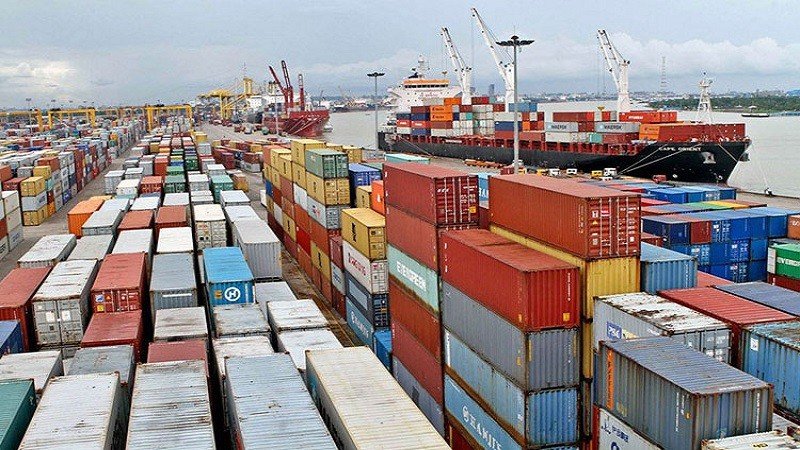Ghana’s ports have witnessed a remarkable recovery in container traffic, bouncing back from years of decline to post historic gains in 2024.
According to the Ghana Ports and Harbours Authority (GPHA), total container traffic surged by 27.8%, reaching 1,701,246 Twenty-foot Equivalent Units (TEUs), up from 1,226,635 TEUs in 2023. This milestone marks the highest container throughput in the nation’s port history, underlining Ghana’s growing relevance in global maritime trade.
The Tema Port, Ghana’s largest port facility, was the main driver of this surge, accounting for over 1.6 million TEUs, while Takoradi Port contributed a little over 32,000 TEUs. This performance highlights not only the resilience of Ghana’s trade sector but also the increasing confidence of global shippers and logistics operators in the country’s port infrastructure.
Historical Context: From Decline to Record Growth
The container traffic figures tell a story of resilience after turbulent years. Ghana’s ports recorded 1,056,780 TEUs in 2018 and 1,048,370 TEUs in 2019, before climbing to 1,287,080 TEUs in 2020. In 2021, container traffic peaked at 1,562,000 TEUs, only to suffer a sharp decline in 2022 to 1,244,240 TEUs.
Industry experts had expressed concern that the drop signaled structural inefficiencies and external trade shocks. However, the modest rebound in 2023 and the extraordinary leap in 2024 demonstrate that Ghana has not only regained lost ground but has achieved unprecedented growth.
GPHA’s Strategic Role in the Transformation
The Acting Director-General of GPHA, Brigadier-General Paul Seidu Tanye-Kulono, credited the success to deliberate strategies aimed at boosting trade competitiveness. He revealed that efforts to scrap taxes on goods in transit are at an advanced stage, a move expected to significantly reduce the cost of doing business at Ghana’s ports.
“Certain taxes and levies imposed on goods and services have long been a concern for industry players. Eliminating these charges will make Ghana’s ports more attractive for regional and international trade.”
Brigadier-General Paul Seidu Tanye-Kulono
Goods in transit—merchandise that has left a seller’s dock but not yet reached the buyer—form a crucial component of global trade. By addressing taxation barriers, GPHA is positioning Ghana to become a leading hub for cross-border cargo movement within West Africa.
Digital Transformation: The Future of Port Operations
Another significant factor underpinning the surge in container traffic is GPHA’s commitment to digitalization. Brigadier-General Tanye-Kulono disclosed that a new digital platform will be rolled out next year to streamline operations and reduce turnaround time.
The platform is expected to automate key port processes, enhance cargo tracking, and integrate customs and shipping documentation. This digital shift is aimed at improving efficiency, transparency, and customer satisfaction while reducing bureaucratic bottlenecks that have historically slowed port operations.
Industry watchers believe this technological leap will cement Ghana’s competitive edge, particularly as neighboring countries also modernize their port facilities.
Economic Implications of the Surge
The record-breaking performance of Ghana’s ports has far-reaching implications for the economy. The growth in container traffic reflects higher levels of import and export activity, signaling rising demand for goods and services. This development bodes well for revenue generation, job creation, and the expansion of related industries such as logistics, warehousing, and freight forwarding.
Moreover, Ghana’s strategic location along the Gulf of Guinea gives it an advantage in serving as a gateway for landlocked countries like Burkina Faso, Mali, and Niger. The anticipated removal of transit taxes could further strengthen this role, encouraging more regional trade flows through Ghanaian ports.
Industry Confidence and Global Outlook
The positive trajectory in 2024 has renewed confidence among shipping lines, freight forwarders, and international investors. With container traffic surpassing 1.7 million TEUs, Ghana now stands shoulder-to-shoulder with some of Africa’s busiest ports, carving a stronger niche in global maritime trade.
Analysts suggest that if this momentum is sustained, Ghana could attract even greater volumes of cargo, positioning the country as a hub not only for West Africa but also for global supply chains seeking efficient African entry points.
Despite the remarkable progress, challenges remain. High operational costs, congestion risks, and the need for continuous infrastructure upgrades could undermine the gains if not addressed. Experts caution that while digital transformation and tax reforms are commendable, Ghana must also prioritize investments in port expansion, automation, and security infrastructure to handle growing volumes sustainably.
Brigadier-General Tanye-Kulono reaffirmed GPHA’s commitment to staying ahead of the curve.
“Our goal is to make Ghana’s ports the preferred trade destination in the region. With reforms, digital innovation, and industry collaboration, we are confident of achieving this vision.”
Brigadier-General Paul Seidu Tanye-Kulono
As GPHA prepares to roll out digital innovations and scrap costly transit taxes, the outlook remains bright. Ghana’s ports are not just recovering; they are reinventing themselves as a cornerstone of the nation’s economic growth and a regional hub for global trade.
READ ALSO: Ato Forson Seals Third Debt Restructuring Pact with UK, Eyes $2.8bn in Infrastructure Boost






















